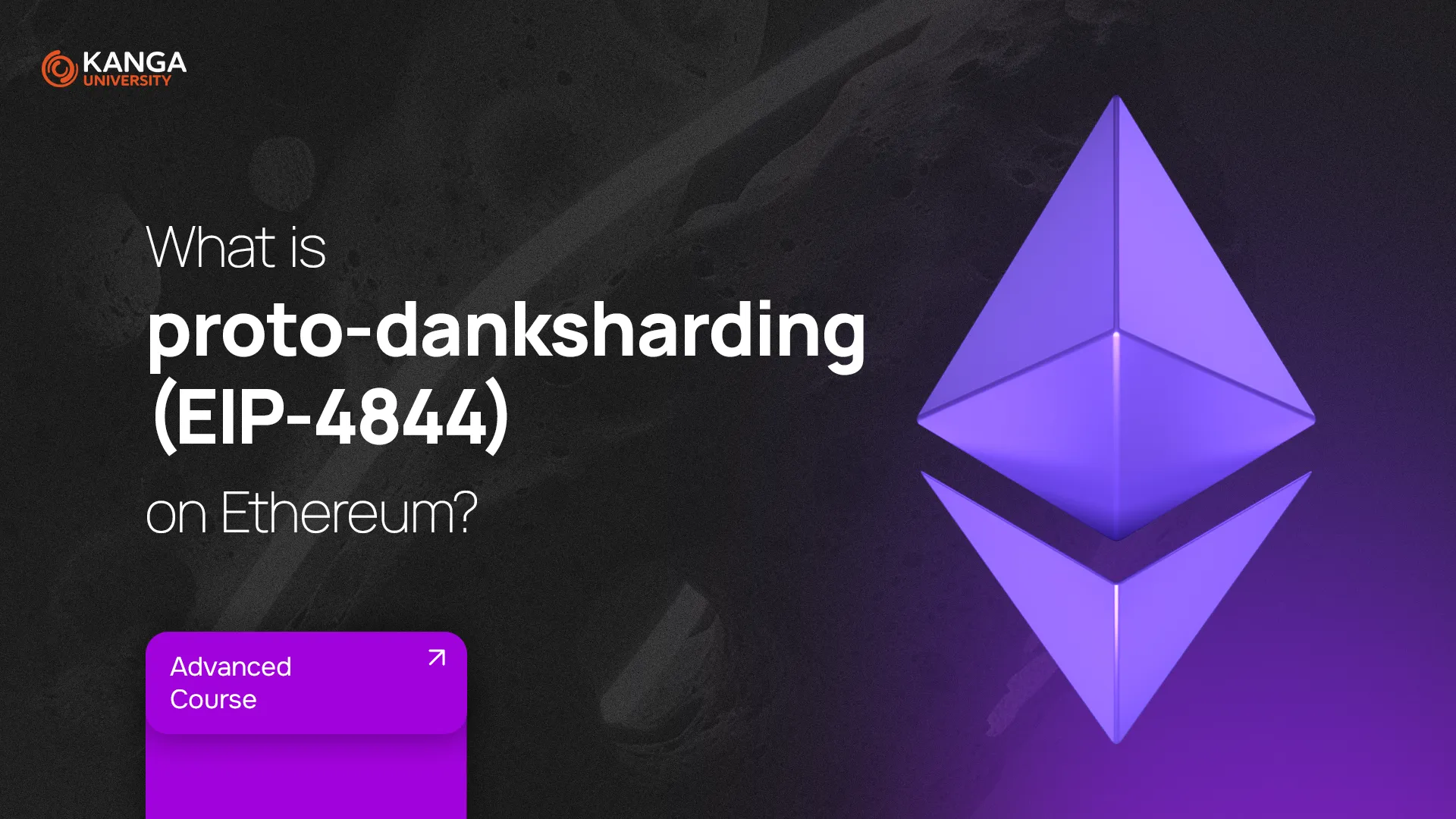
Ethereum continues to evolve. One of its biggest milestones in recent years was switching to a Proof-of-Stake (PoS) consensus mechanism in 2022. Now, the network is preparing for another major upgrade: EIP-4844, better known as proto-danksharding. This proposal aims to lay the groundwork for a more scalable Ethereum and significantly reduce transaction costs, especially for Layer 2 solutions.
What is Danksharding?
Danksharding is a new approach to sharding that was designed specifically for Ethereum. Traditional sharding splits the blockchain into smaller parts to handle transactions in parallel. Danksharding does things differently. Instead of dividing the network to process more transactions, it increases the space available for storing data.
In this model, Ethereum introduces “blobs”—large data chunks that are not processed by the Ethereum Virtual Machine (EVM) but are stored and verified for availability. These blobs provide extra space for Layer 2 rollups to post their data, which enables higher throughput without congesting Ethereum’s mainnet.
What is Proto-Danksharding (EIP-4844)?
Proto-danksharding is the first step toward full danksharding. EIP-4844 proposes a new transaction type that includes a blob of data. These blob-carrying transactions work like regular transactions but carry extra off-chain data that the EVM cannot directly access.
The key idea is that these blobs are cheaper to store and transmit. They don’t add computational load to the network, making the entire system more efficient. Validators verify the presence of blobs using a special cryptographic technique called KZG commitments, which ensure the data is available without storing it indefinitely.
How Does EIP-4844 Work?
EIP-4844 introduces a new transaction format that allows users to attach a blob—about 125 kB of data. This data is verified by validators but not processed like traditional transaction data. It creates a separate “data fee market” from Ethereum’s usual gas market, meaning data-heavy apps can operate without increasing gas fees for everyone else.
The result? Rollups, which bundle and execute large numbers of transactions off-chain before posting a summary to Ethereum, can use blobs to post their data at a much lower cost. This can reduce rollup transaction fees by up to 90%.
Why Does Ethereum Need Proto-Danksharding?
Ethereum’s biggest challenge is scalability. The network can only process a limited number of transactions per second, and gas fees can be expensive during times of high demand.
Proto-danksharding helps solve this by:
-
Offloading data from Ethereum’s mainnet
-
Creating cheaper data storage options
-
Preparing the ecosystem for future updates, like full danksharding
-
Making rollups faster and more affordable
By separating the way data is handled from the way transactions are processed, Ethereum becomes more flexible and efficient.
Proto-Danksharding vs. EIP-4488
EIP-4488 is another scaling proposal aimed at reducing gas costs and data sizes in the short term. It works by lowering gas fees for calldata and shrinking the maximum block size. In contrast, proto-danksharding introduces a new transaction type and a separate data fee market, laying the foundation for long-term upgrades like full danksharding.
While EIP-4488 focuses on immediate relief, EIP-4844 is a strategic investment in Ethereum’s future scalability.
Is Proto-Danksharding Already Live?
Not yet. As of April 2025, EIP-4844 is still in the proposal phase. It is expected to be part of the upcoming Dencun upgrade, but no official launch date has been announced. Developers are actively testing it in various testnets and implementation environments.
Key Benefits of EIP-4844
-
First step toward full danksharding
-
Reduced transaction costs for Layer 2 rollups
-
New data layer that doesn’t compete with Ethereum’s gas fees
-
Enables faster and cheaper blockchain applications
-
Improves Ethereum’s scalability without compromising security
Summary
Proto-danksharding (EIP-4844) is a major step forward for Ethereum. It introduces a new type of transaction that carries large amounts of data in the form of blobs. These blobs lower data costs for rollups and improve the network’s scalability. Although the proposal hasn’t been activated yet, its impact on Ethereum’s performance and user experience could be transformative.